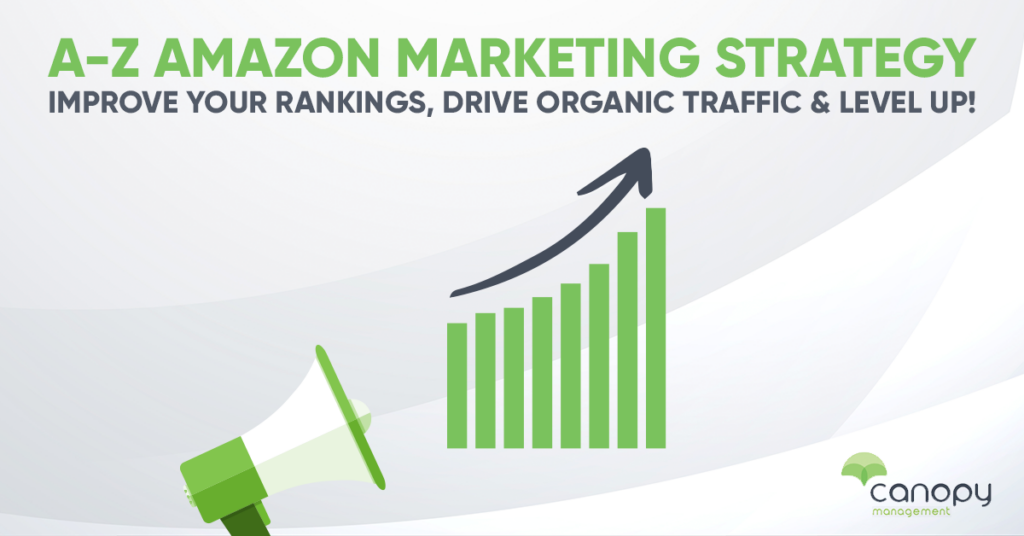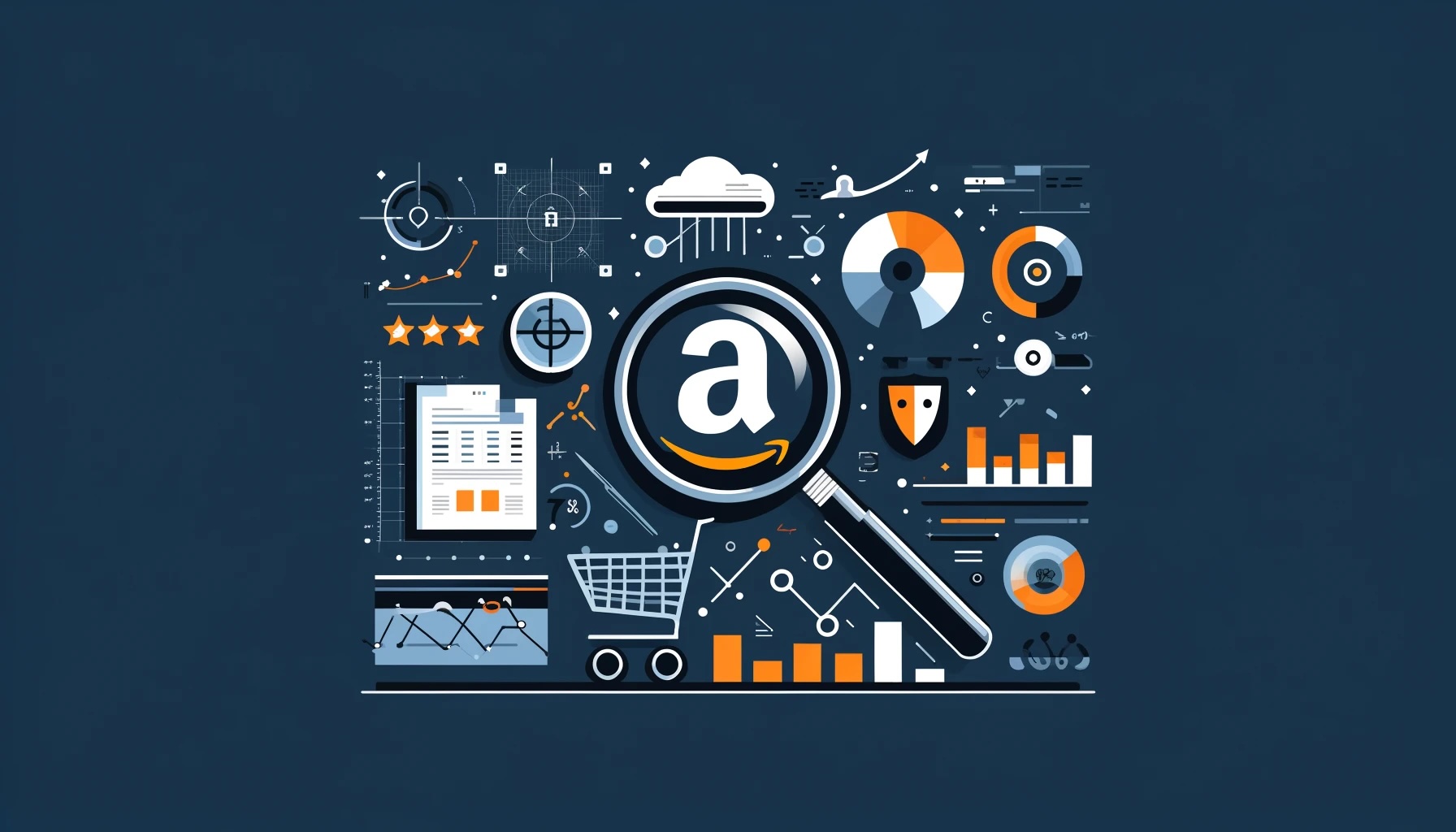Selling on Multiple Platforms: Why Ecommerce Entrepreneurs Might Want to Look Beyond Amazon
Amazon may be the 800-pound gorilla in ecommerce, but it’s not the only player. Here’s how savvy brand owners can develop a multichannel strategy for long-term growth:

Amazon has firmly established its dominance over the ecommerce landscape. In 2022, Amazon’s total consolidated net sales revenue amounted to 514 billion U.S. dollars, with their largest revenue segment (online retail) at approximately 220 billion U.S. dollars. As an Amazon Management Agency, we understand the allure.
With those kinds of numbers, it’s no wonder that so many online sellers take advantage of the vast audience reach, powerful tools, and logistic capabilities offered by Amazon FBA – a nod to Amazon’s appeal as the preferred choice for ecommerce entrepreneurs.
Still, fixating on Amazon’s outsized position in the marketplace makes it more likely that sellers overlook a strategy that can significantly enhance the potential of their ecommerce business. I’m referring to multichannel selling.
In 2023, diversification has become a sort of cheat code helping entrepreneurs to manage a range of ecommerce challenges such as supply-chain disruptions, Amazon account suspensions, and rising advertising costs. Diversification might mean taking advantage of Walmart’s growing marketplace, or trending ‘Live” selling ecosystems.
A multichannel strategy is a crucial asset for any online seller navigating the competitive digital marketing landscape.
Here are six reasons why it is worth considering:

1. Shocker – You Can’t Always Count on Amazon
With all the challenges involved in ecommerce, relying on a single source of income can be dangerous. Putting all your eggs in one basket is almost never a good idea. Despite Amazon’s vast customer base and impressive sales records, the platform presents unique challenges for sellers.
Amazon is notorious for its continuous updates and algorithm changes which can directly impact your product’s visibility in search results and subsequently, your sales. Even though these changes are aimed at improving customer service, they mean unpredictable fluctuations for Amazon sellers.
Algorithm updates can cause your product rankings to crater overnight, and can quickly result in decreased visibility and a subsequent drop in sales. Or, they can even cause a suspension of your Amazon seller account due to a customer complaint or a misunderstanding of Amazon’s policy.
Even minor changes in Amazon’s fees or policies can drastically impact your bottom line. Amazon frequently adjusts its fee structures, including Fulfillment by Amazon (FBA) fees and category-specific referral fees. These alterations directly affect profitability, compelling sellers to continually adapt their pricing strategies to protect their profit margin.
Adopting a multichannel strategy ensures you’re not bound by a single platform’s constraints. You have the flexibility to optimize your strategies according to each channel’s specific requirements and advantages. It distributes your risk, provides flexibility, and builds resilience in your business against sudden changes or challenges

2. It’s Time to Broaden Your Customer Reach
Shoppers can find pretty much anything they can dream up in the global ecommerce marketplace. Each separate online marketplace can end up attracting a unique customer base with different shopping habits and preferences. Relying solely on Amazon, even with its immense customer base, may restrict you from reaching potential customers who prefer other platforms.
Even though it seems like everyone shops on Amazon, some demographics may be underrepresented. A different channel might better cater to distinct customer niches that could perfectly align with your products.
It seems like every Amazon seller is taking a closer look at Walmart’s marketplace. When it comes to social proof, having grown up with a big brick and mortar Walmart store anchoring the local shopping mall is about as good as it gets.
Etsy is the preferred platform for customers seeking unique, handmade, or vintage items, while eBay is renowned for its collection of second-hand items, collectibles, and unique finds. Moreover, niche-specific marketplaces like Newegg (popular among tech enthusiasts) or Poshmark (a favorite among second-hand fashion buyers) and even region-specific platforms like Allegro in Poland or MercadoLibre in Latin America offer opportunities to reach unique customer segments.
Additionally, the rise of social commerce on platforms like Instagram and Facebook has opened up entirely new avenues for connecting with customers.

3. Creating Unique Marketing Opportunities
Each separate ecommerce platform provides unique marketing and promotional features to help sellers reach their target audience more effectively. Of course, Amazon offers Amazon Advertising, a comprehensive suite of advertising solutions, including Sponsored Products, Sponsored Brands, and Sponsored Display, which help boost product visibility in search results. Additionally, Amazon’s Demand Side Platform (DSP) helps sellers reach potential customers both on and off Amazon through programmatic advertising.
Similarly, the Walmart Marketplace offers the Walmart Connect advertising program, a cost-per-click advertising solution that positions products in highly visible positions across Walmart’s digital platforms. eBay provides Promoted Listings, allowing sellers to boost visibility and sales by placing products in prominent locations across the platform.
Most of us cannot make it through a day without interacting with Google. It makes sense that their advertising platform has such a powerful reach. Platforms like Etsy, and Instagram have their unique advertising solutions, all tailored to their specific user demographics and shopping behaviors.
With your own ecommerce website, you can experiment with SEO, email marketing, content, brand affiliates, and more, all without the constraints of a third-party platform like Amazon.
By expanding your presence to multiple channels, you gain access to the distinct advertising tools each one offers. You can explore and find the best promotional mix that optimizes your product visibility, aligns with your marketing budget, and maximizes return on ad spend.

4. A Plan ‘B’ for Your Supply Chain
Amazon’s FBA program is a big part of why so many sellers have chosen them as their primary marketplace. It simply makes every part of the fulfillment (and selling) process easier!
Right up until it doesn’t.
Amazon quickly transitioned from renting a single warehouse in 1996 to currently managing over 185 fulfillment centers all around the world. The supply chain that Amazon has built is extremely robust and dependable most of the time.
The problem is when an individual segment of the supply chain is affected – because everything is so dependent on each other – the entire system can fail. That’s exactly what happened during the pandemic. Sellers with multiple fulfillment options were able to dominate their selling niches like never before.
Selling on multiple channels allows you to explore different fulfillment options. Walmart’s Marketplace has a fulfillment program similar to Amazon FBA. More importantly, due to the slightly different products that they sell, platforms such as Shopify and Etsy might be sourcing their merchandise from another part of the globe entirely.
Even though Google recently pulled the plug on their own Shopping app, it shows that the biggest ecommerce players all see the value inherent in competing head to head with Amazon.
Having a presence on multiple platforms is going to require an efficient inventory management strategy. It’s crucial to keep track of your stock levels across all platforms to avoid overselling or stockouts. Leveraging inventory management software can be helpful in managing your inventory across multiple seller accounts and platforms. By comparing the costs and benefits of different fulfillment programs, you can choose the one that best suits your business needs.

5. Go to the Front of the (Amazon) Line
As mentioned above, Amazon Advertising offers powerful tools that help you increase your product’s visibility. Amazon Sponsored Display and DSP allow you to reach well beyond Amazon’s boundaries to reach shoppers on third-party websites and apps. But to really expand your reach, and go to the front of Amazon’s Buy Box line, you’ll want to consider advertising on other platforms as well.
That’s because, with each incremental change to their algorithm, Amazon has placed increasing importance on the value of sellers moving off-Amazon traffic back to the Amazon marketplace. It remains one of the best ways to increase your rank, and ultimately your traffic.
Over the last few decades, we’ve enjoyed a wealth of innovations that have changed the way we work and live. Smartphones, online selling, and now, highly-interactive “live” selling events that blur the line between entertainment and commerce.
Social media platforms also offer advertising options. With Facebook’s third-party seller tools, you can showcase your products to its enormous user base. Instagram’s shoppable posts make it possible to sell directly from the platform, creating a seamless shopping experience for customers.

6. Brand Building and Control
Building a strong, recognizable brand is a key factor that differentiates successful businesses from the rest. However, if you’re just selling on Amazon, the opportunities for individual brand building are somewhat limited.
Amazon views shoppers on their marketplace as their customers, and acts accordingly. The end result is that they exercise considerable control over how products are listed and presented. Amazon’s primary focus is on the overall customer shopping experience, not your individual brand.
Contrast this with having your own ecommerce website or using platforms like Shopify, where you have more control over your brand representation. You can design your store to reflect your brand’s personality, use custom branding for all your communications, and create a more unique and engaging shopping experience.
That’s one reason why a lot of very successful Amazon sellers reach out to a top Amazon Agency like Canopy Management. Canopy’s Creative Services Team knows how to wring every last little bit out of the Amazon platform’s A+ Content allowing you to put your own stamp on Amazon real estate and make sure your brand is front of mind.

How to Develop a Multichannel Strategy
While multichannel selling is clearly a major advantage for increasing brand growth, it’s not for the faint of heart. If your team is smaller or less experienced, the additional logistics could be too much to handle. That said, brand owners who can afford to hire people with experience growing brands on specific platforms will almost certainly get a return on their investment.
For brands who don’t want to hire in-house, many agencies specialize in channel management for Etsy, eBay, Walmart, and other marketplaces. Other agencies have larger teams with specialists in each platform, which can be advantageous as those team members can work together to make sure brand growth on one channel is not adversely impacting growth on the other.
At Canopy, we’ve built strong teams of experienced ads specialists and creative experts in both Amazon and Walmart. If you’re looking to expand your brand reach beyond your current platform and would like help developing a more in-depth strategy, feel free to reach out to one of our growth strategists by clicking here.
Thinking About Hiring an Amazon Management Agency?
Canopy’s Partners Achieve an Average 84% Profit Increase!
Let’s talk

